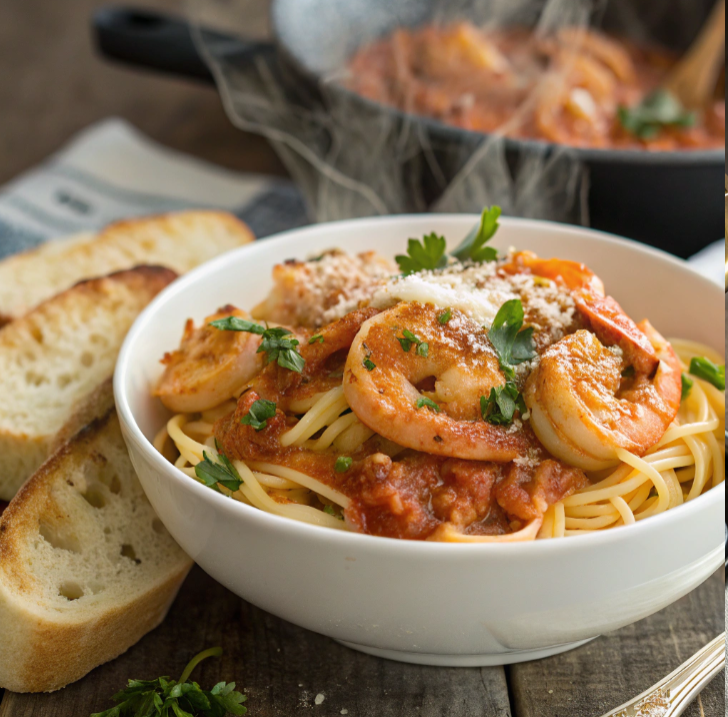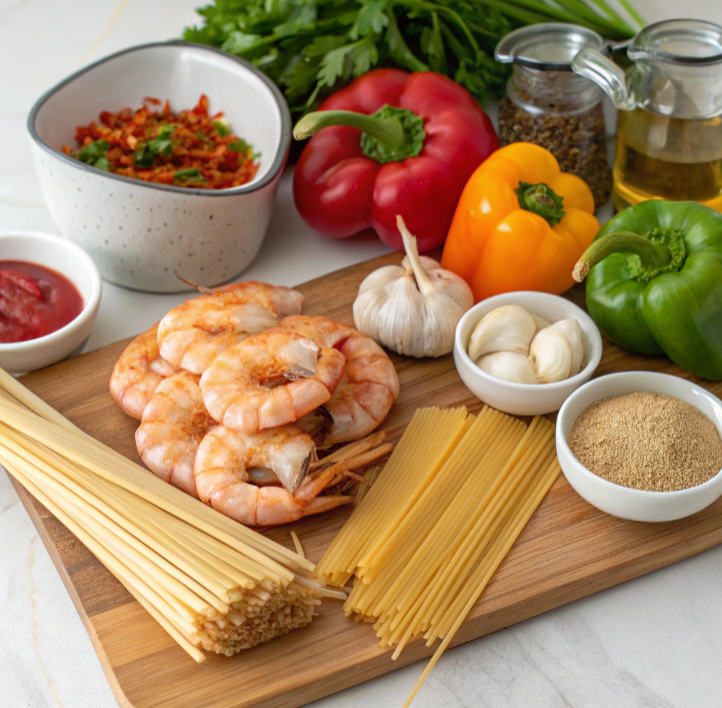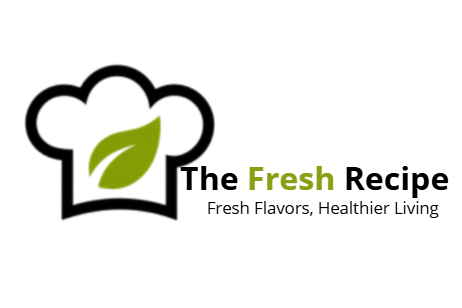
Yummy Cajun shrimp pasta
Cajun shrimp pasta has become a beloved dish for food enthusiasts across the globe. Its rich flavors, spicy undertones, and creamy texture make it an irresistible meal choice. Whether you’re hosting a dinner party or preparing a comforting family meal, this dish brings both versatility and indulgence to your table. In this article, we will delve deep into the history, preparation, and nutritional benefits of this exquisite dish while ensuring you have all the information needed to create it perfectly.
The Origins of Cajun Cuisine
To understand Cajun shrimp pasta, it’s essential to explore the roots of Cajun cuisine. Originating from the French-speaking Acadians who settled in Louisiana, Cajun cooking is renowned for its bold flavors and hearty ingredients. Traditionally, this cuisine was developed out of necessity, utilizing local and seasonal ingredients to create flavorful meals.
The distinctive seasoning blends—a key element in Cajun shrimp pasta—combine paprika, cayenne, garlic powder, and other spices. These blends bring a smoky and spicy depth to the dish. The fusion of French, African, and Spanish influences has made Cajun cuisine uniquely robust, and its widespread popularity ensures dishes like Cajun shrimp pasta remain iconic.
Why Cajun Shrimp Pasta?
So, why does Cajun shrimp pasta stand out among countless other pasta recipes? The answer lies in its combination of flavors and textures. Juicy, well-seasoned shrimp pairs perfectly with creamy pasta and bold spices, creating a harmonious balance of taste. This dish is also adaptable, allowing you to adjust spice levels or swap ingredients to suit dietary preferences.
Another reason for its appeal is its simplicity. With minimal effort, Cajun shrimp pasta delivers a gourmet experience. Whether you’re a seasoned cook or a beginner in the kitchen, this dish promises satisfaction. Its versatility extends to presentation as well, making it suitable for casual dinners and formal occasions alike.
Ingredients Overview
Preparing Cajun shrimp pasta starts with gathering the right ingredients. Here is a breakdown of what you’ll need:

Ingredients for Cajun Shrimp Pasta Recipe
- Shrimp: Fresh or frozen, deveined and peeled.
- Pasta: Fettuccine or penne work well, but feel free to use your favorite type.
- Cajun seasoning: A homemade blend or store-bought option.
- Heavy cream: For that creamy texture.
- Parmesan cheese: Adds richness to the sauce.
- Bell peppers and onions: Provide crunch and sweetness.
- Garlic: Enhances the dish’s aromatic profile.
- Olive oil or butter: For cooking the shrimp and vegetables.
- Chicken or vegetable broth: Balances the flavors in the sauce.
Each ingredient plays a vital role in ensuring your Cajun shrimp pasta is flavorful and satisfying. Opt for high-quality, fresh ingredients whenever possible to maximize the dish’s taste.
Step-by-Step Recipe
Creating Cajun shrimp pasta is straightforward and rewarding. Follow these steps for a dish that’s sure to impress:
- Cook the pasta: Boil your chosen pasta in salted water until al dente. Drain and set aside.
- Season the shrimp: Toss the shrimp with Cajun seasoning to coat evenly.
- Sauté the shrimp: Heat olive oil or butter in a skillet and cook the shrimp for 2-3 minutes per side until pink and opaque. Remove and set aside.
- Cook the vegetables: In the same skillet, sauté diced onions, bell peppers, and minced garlic until softened.
- Prepare the sauce: Add heavy cream and chicken broth to the skillet. Stir and let it simmer until the sauce thickens slightly.
- Combine ingredients: Stir in the cooked pasta and Parmesan cheese, then add the shrimp back to the skillet.
- Serve and garnish: Plate the pasta and garnish with fresh parsley or additional Parmesan cheese.
By following these steps, you’ll create a creamy and flavorful Cajun shrimp pasta that will delight your taste buds.
Tips for the Perfect Dish
Achieving the ideal Cajun shrimp pasta requires a few expert tips:
- Control the spice level: Adjust the amount of Cajun seasoning to suit your preference. For a milder dish, reduce the cayenne pepper.
- Don’t overcook the shrimp: Overcooked shrimp can become rubbery, so monitor them closely while cooking.
- Use fresh ingredients: Fresh shrimp and high-quality Parmesan cheese elevate the overall taste.
- Balance the sauce: If the sauce becomes too thick, add a splash of pasta water to loosen it.
- Experiment with add-ins: Consider adding mushrooms, spinach, or cherry tomatoes for additional flavor and nutrition.
These small adjustments ensure your Cajun shrimp pasta is nothing short of exceptional.
Nutritional Value
One of the great aspects of Cajun shrimp pasta is its nutritional profile. While it’s undeniably indulgent, it also provides several health benefits:
- Shrimp: Packed with protein, low in calories, and a good source of omega-3 fatty acids.
- Bell peppers: Rich in vitamin C, antioxidants, and fiber.
- Garlic: Known for its immune-boosting properties and ability to lower cholesterol.
- Parmesan cheese: Provides calcium and protein, though it’s best enjoyed in moderation.
A typical serving of Cajun shrimp pasta offers a balanced mix of proteins, carbohydrates, and fats, making it a satisfying and energizing meal. For a lighter version, consider using whole-grain pasta and substituting heavy cream with a lower-fat alternative.
Substitutions and Variations of Cajun Shrimp Pasta
Flexibility is one of the key features of Cajun shrimp pasta. Here are some substitutions and variations to consider:
- Protein options: Replace shrimp with chicken, tofu, or even sausage for a different flavor profile.
- Pasta types: Swap fettuccine or penne for gluten-free or whole-grain options to meet dietary needs.
- Dairy alternatives: Use coconut cream or almond milk in place of heavy cream for a dairy-free version.
- Vegetable additions: Incorporate zucchini, broccoli, or kale to boost nutritional content.
- Vegan version: Substitute shrimp with plant-based protein and use vegan cheese for a completely plant-based meal.
These adjustments ensure that Cajun shrimp pasta can cater to a variety of tastes and dietary restrictions.
Pairing Ideas
The robust flavors of Cajun shrimp pasta make it an excellent centerpiece for a well-rounded meal. Here are some pairing suggestions:
- Salads: A crisp Caesar salad or mixed greens with a light vinaigrette complements the dish beautifully.
- Bread: Serve with warm garlic bread or a baguette to soak up the creamy sauce.
- Wine: A chilled Sauvignon Blanc or a light Pinot Noir pairs wonderfully with the spice and creaminess.
- Vegetables: Roasted asparagus or steamed green beans add a refreshing touch to the meal.
Thoughtful pairings elevate the dining experience and bring balance to the flavors of the dish.
Common Mistakes to Avoid
Avoid these common pitfalls to ensure your Cajun shrimp pasta turns out perfectly every time:
- Overcooking the pasta: Ensure it is cooked al dente to avoid a mushy texture.
- Using pre-cooked shrimp: Fresh shrimp retain better flavor and texture.
- Overpowering the dish: Be mindful of the Cajun seasoning quantity to avoid an overly spicy or salty result.
- Skipping the deglazing step: Deglazing the skillet with broth or wine enhances the sauce’s flavor depth.
- Ignoring proportions: Balancing shrimp, pasta, and sauce ensures a cohesive dish.
By sidestepping these mistakes, you’ll achieve a consistently excellent outcome.
Storage and Reheating Tips
Proper storage and reheating ensure your leftovers retain their flavor and texture:
- Refrigeration: Store Cajun shrimp pasta in an airtight container in the fridge for up to 3 days.
- Freezing: Avoid freezing, as the cream sauce may separate when thawed.
- Reheating: Warm leftovers in a skillet over low heat, adding a splash of broth or milk to refresh the sauce.
- Microwave option: If using a microwave, heat in short intervals and stir to ensure even warming.
These techniques help maintain the dish’s quality, even after storage.
FAQs about Cajun Shrimp Pasta
What can you eat with shrimp pasta?
Shrimp pasta pairs well with many sides that complement its creamy and spicy flavors. For instance, a fresh garden salad or Caesar salad offers a refreshing contrast to the rich sauce. Additionally, warm garlic bread or a crusty baguette is ideal for soaking up every bit of the flavorful sauce. If you prefer vegetables, roasted asparagus or steamed broccoli make excellent choices, as they provide a healthy balance to the meal.
What pasta shape is best with shrimp pasta?
When choosing a pasta shape for shrimp pasta, it’s best to consider how the sauce clings to the pasta. Shapes like fettuccine and linguine are excellent choices because their flat surfaces hold the creamy sauce beautifully. Penne or rigatoni are also great options, as their ridges trap the seasoning and enhance every bite.
What type of pasta is best for seafood pasta?
Seafood pasta typically works best with light and versatile pasta shapes. For creamy dishes like shrimp pasta, fettuccine and linguine are ideal because they complement the sauce’s texture. For broth-based seafood pasta, spaghetti or angel hair works well, allowing the flavors of the seafood to shine through without being overwhelmed.
What can you eat with shrimp pasta?
To round out your shrimp pasta meal, consider pairing it with sides that enhance its flavors. A crisp, lemon-dressed salad is a refreshing choice, while garlic bread provides a satisfying way to enjoy every drop of the sauce. For a vegetable option, roasted zucchini or sautéed spinach adds both flavor and nutrition to your plate.
Conclusion
Cajun shrimp pasta is more than just a meal; it’s an experience. With its bold flavors, creamy texture, and versatility, it’s a dish that continues to win hearts. By following this guide, you can create a restaurant-quality meal in the comfort of your home. Whether you’re experimenting with variations or perfecting the classic recipe, this dish promises to deliver satisfaction every time. Enjoy the process and savor the results!
